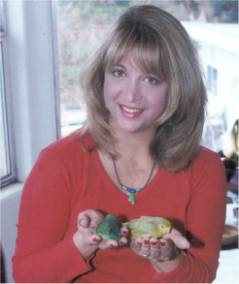Hello,
I am trying to find a baby parrotlet in my area so it doesn't have to be shipped. I have looked at the pictures and really think the light blue ones are very beautiful. A lady a few hours from me said that she has a baby "holland blue" parrotlet with Indigo on its wings and back. Unfortunately, she doesn't have a computer and doesn't know how to send pictures on her cell phone so she can't get a picture to me. I have tried looking it up online but nothing shows up under "holland blue" parrotlet. Do you have any idea where I could find a picture like this so I would know what he looks like before we drive four hours just to look at him? I would really appreciate any help you could give me. Here is a picture of the color of bird I am looking for: Could you tell me what color this bird is? If this is not Holland blue do you have any idea where I could find a baby parrotlet this color somewhere in Wisconsin? We live in the Wausau area but are willing to travel within Wisconsins if we find a bird.
Again, thank you so very much.
Elysheva (Elly)
Dear Elly:
Thank you for your email. There is no such bird as a ‘holland blue’. That is an internet term that was made up by someone and passed around like a virus. But it means nothing. All of the blue mutations came from Europe – mostly Belgium but also Germany, United Kingdom and Holland but it doesn’t matter since that happened more than 17 years ago and many generations have been produced in this country. Wherever their origins, they are most certainly “American-made” these days.
Blue is a mutation that has a wide range of color tones. It can run the gauntlet from a deep teal to a light powder blue. Males and females are also different (and btw ALL males except for albino have dark blue feathers on the wings, backs and rumps – that’s how you determine they are males). Males tend to have more gray especially on the back and wings. This is because the normal male parrotlets have more melanin than females. Females therefore tend to be more blue than males. I always tell people its like blond hair in humans. Some people are platinum blonds, some honey blonds, some strawberry blonds, etc., but they are still all blonds. Also, unlike humans, birds often change colors as they molt – particularly the first year. Even look at the parent birds is not going to give you an accurate picture of what the offspring are going to look like since birds are not dogs and you are not going to make exact replicas of the parents because of the factors I have already told you about.
The picture of the bird you sent is a male blue Pacific. That’s it. The only way you can be assured of buying a bird like this is for you to go out and look at them. I certainly, after more than 30 years of breeding parrotlets and having seen thousands of them as well as producing hundreds, cannot tell you where you can find a specific color of bird and promise that it will stay that way. No honest breeder can. Parrotlet mutations haven’t been bred long enough in this country for us to have uniform colors like they do with budgies, lovebirds and cockatiels. Perhaps in another 100 generations or so.
So, if color is the most important thing to you – rather than personality, pet quality or companionship factor, then only you can decide what is as ascetically pleasing to you. After all, beauty is in the eye of the beholder. So no, I can’t recommend anyone to you although I know hundreds of breeders – you will have to go physically look at every bird to see if that is what you want and then hope it doesn’t change as it grows and molts, especially if it is a male.
Hope this helps!
Sincerely yours,
Sandee L. Molenda, C.A.S.
Secretary, International Parrotlet Society
Subscribe to:
Post Comments (Atom)




No comments:
Post a Comment
Note: Only a member of this blog may post a comment.